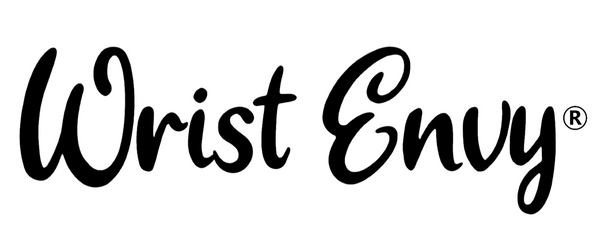Replacing a watch strap is simple with the right steps. This guide covers measuring lug width, choosing the right strap, and the tools you’ll need. You’ll also learn how to switch straps without damaging your watch.
Watch straps come in various materials, including leather, silicone, and metal. Metal bracelets are durable and add a touch of sophistication. A watch bracelet, another term for a metal strap, is not only stylish but also allows for easy maintenance and personalization, such as shortening the bracelet to fit your wrist perfectly.
Introduction to Watch Strap Replacement
Replacing a watch strap can be a straightforward process, but it requires some knowledge and the right tools. A watch strap is a crucial part of a timepiece, not only for its aesthetic appeal but also for its functionality. With the right replacement watch strap, you can give your favorite watch a brand-new look and feel. In this section, we will guide you through the basics of watch strap replacement, including the types of watch straps, the tools needed, and the steps involved in the process.
Watch straps come in various materials, each offering unique benefits. Leather watch straps provide a classic and elegant look, perfect for formal occasions. Metal bracelets are durable and add a touch of sophistication. Rubber straps are ideal for an active lifestyle due to their comfort and water resistance, while nylon straps offer versatility and durability for outdoor activities.
To replace a watch strap, you’ll need a few essential tools, including a spring bar tool, a microfiber cloth, and a leather mat. The process involves removing the old strap, measuring the lug width, and installing the new strap. With the right preparation and tools, you can easily refresh your watch’s appearance and functionality.
Key Takeaways
-
Creating a clean and organized workspace is essential for a successful watch strap replacement, preventing damage to the watch and loss of small parts.
-
Accurate measurement of lug width is crucial for selecting the right replacement strap, with various materials available to suit different lifestyles and occasions. Additionally, handling the watch head carefully during the strap replacement process is important to avoid any damage.
-
Using the appropriate tools, such as a spring bar tool and microfiber cloth, ensures a smooth strap removal and installation process, along with careful handling to preserve the watch’s integrity.
Preparing Your Workspace

Creating the ideal workspace sets the stage for a successful watch strap replacement. A clean and stable surface, such as a table or countertop, helps maintain control over small parts and tools. A leather mat protects your watch from scratches and keeps tiny components from rolling away. It is also crucial to protect a leather watch strap from potential damage during the process.
Position your watch face down with the lugs pointed out to simplify the process. Keep your workspace tidy and organized to avoid mishaps. A clean pad prevents scratches and helps keep small parts from getting lost.
Measuring Lug Width
Measuring the lug width is crucial for finding the perfect replacement watch strap. This width, the distance between the attachment points where the strap connects to the watch case, can be accurately measured in millimeters using a digital caliper.
Accurate measurement is key since not all straps fit all watches. Having the correct lug width saves time and effort when selecting and fitting your new strap.
Choosing the Right Strap Material
Choosing the right strap material blends art and science. Options range from calf leather, known for its classic and elegant look, to metal straps offering durability and a formal appearance. A leather strap is ideal for smart evening wear due to its sophisticated aesthetic, and leather watch straps can also enhance the overall look.
For an active lifestyle, a rubber strap provides comfort and water resistance, making it perfect for sports. If outdoor activities are your thing, nylon straps made from tough nylon offer durability, versatility, and comfort.
Think about your daily activities when selecting a material. Rubber or metal straps excel in water resistance, while leather or fabric options are great for everyday wear.
Essential Tools for Strap Replacement: Spring Bar Tool
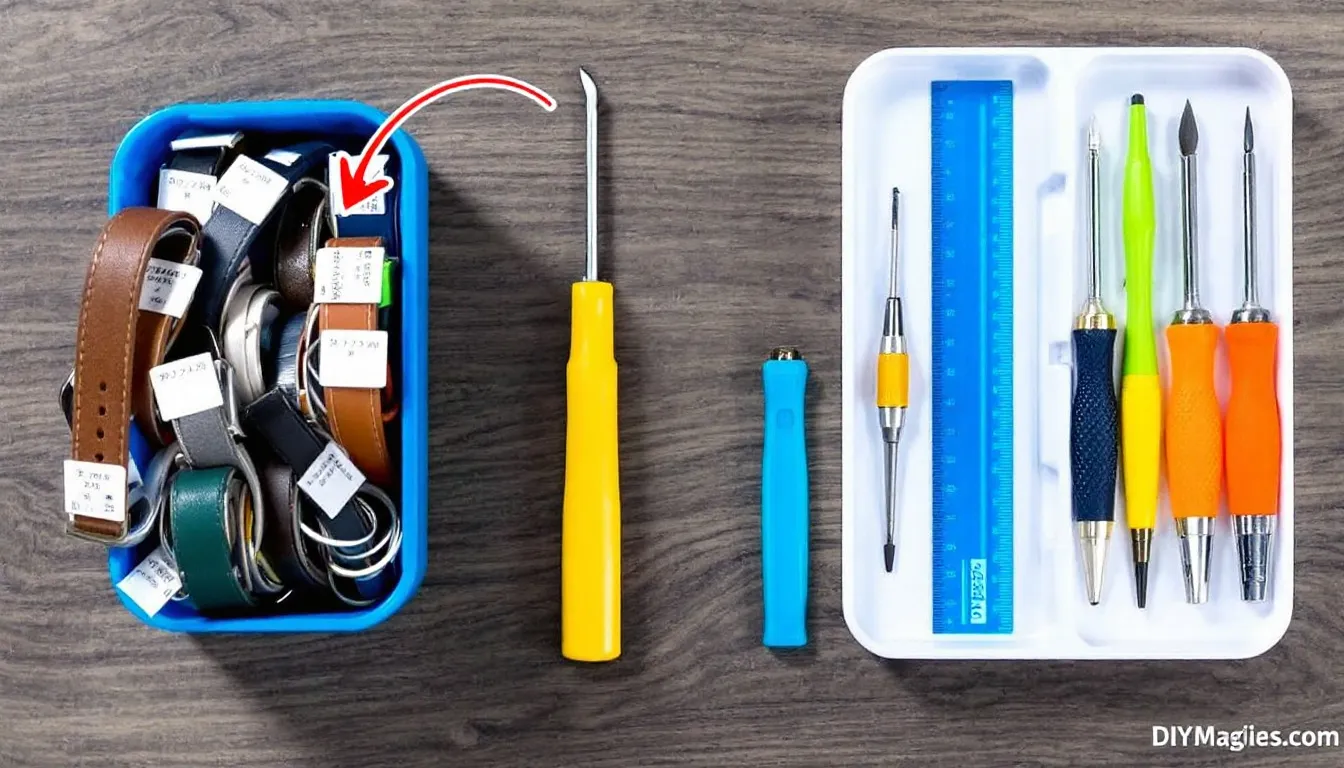
Having the right tools makes the strap replacement process smooth and efficient. Key tools include a spring bar tool, a microfiber cloth for protecting your watch, replacement watch straps, and a leather mat to keep small parts secure.
Keep your workspace organized, with all necessary tools easily accessible. Working on one strap at a time helps maintain control and prevents losing small parts.
Understanding Spring Bars
Spring bars securely hold the pieces to the watch case. A spring bar tool usually comes with a wider fork for leather straps and a thinner fork for metal bracelets.
Handling these small parts can be tricky, but tweezers make the job easier. Check that the spring bars are in good condition before reusing them to ensure the safety of the watch strap.
Removing the Old Strap
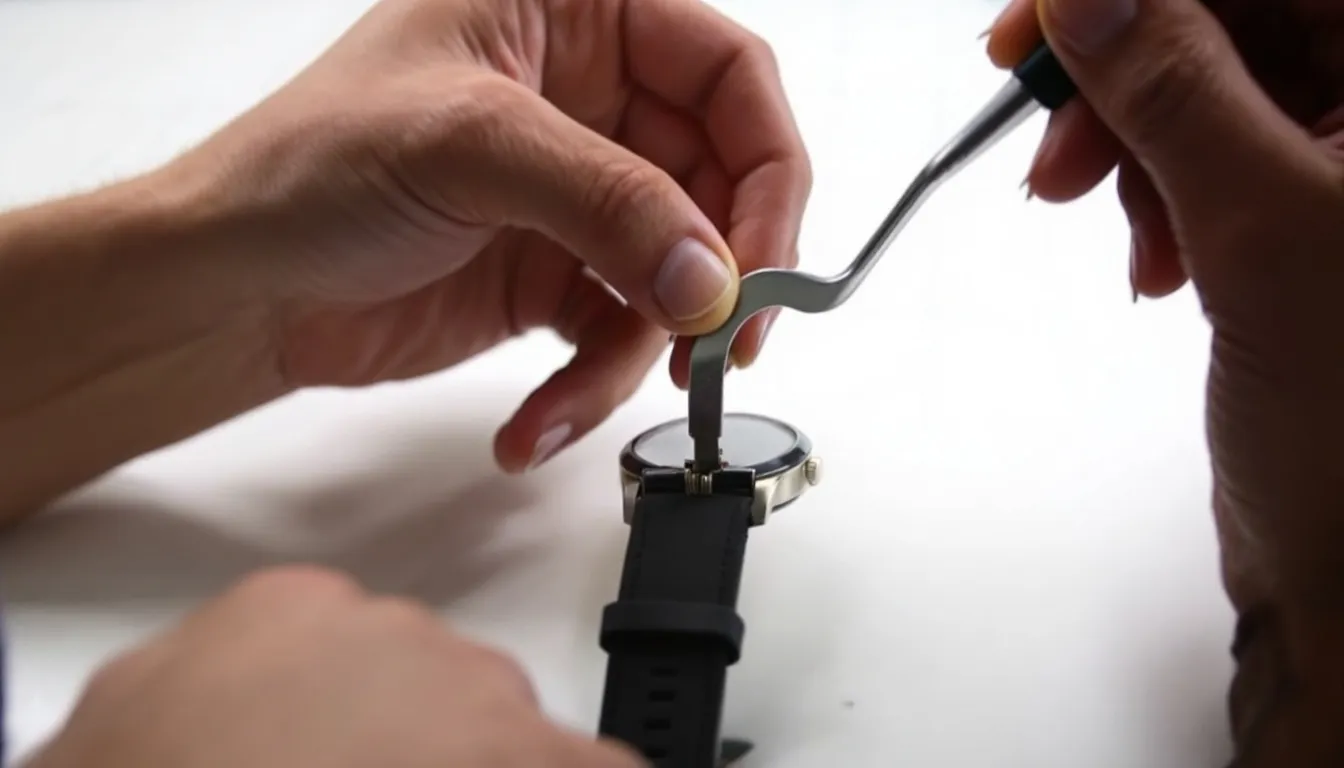
Removing the old strap requires a gentle hand to prevent damage. Start by turning the watch face up and then rotating it 180 degrees to position the remaining strap piece for removal. Use the fork end of a spring bar tool to apply tension and gently push the pin to the left to pop it out.
Take your time to avoid losing any small parts. This careful approach makes the entire process smoother and safer.
Removing Straps with Drilled Holes
For watches with drilled lug holes, a rounded pin tool safely disengages the lug hole spring bars, allowing you to remove the strap without damaging the watch or the lugs.
Removing Metal Bracelets
Detaching metal bracelets requires specific techniques to handle the end links and spring bars properly. Careful handling is crucial to avoid damaging the watch or the bracelet during the removal process.
Installing the New Strap
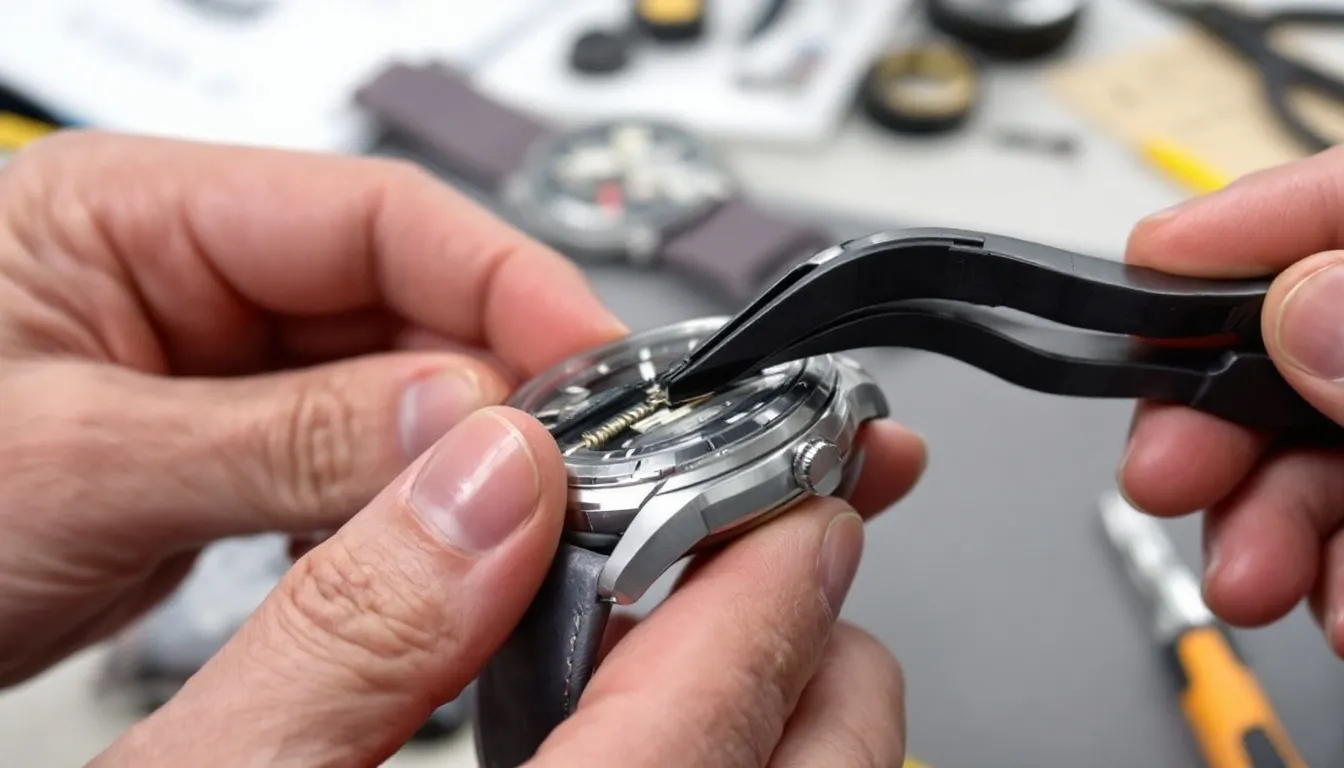
Installing the new watch strap is the moment where everything comes together. Gently push the bar through the new strap and use the fork end of the spring bar tool to insert it into the lug holes. Push the other side of the spring bar into the other hole until you feel the pin click into place, ensuring a secure fit.
Double-check that the strap is properly aligned and securely attached. This final step ensures your watch is ready to wear and enjoy.
Fitting Quick-Release Straps
Quick-release straps are designed for ease and convenience. They can be changed by sliding the small lever to release the spring bar, with no tools required. This feature is especially beneficial for rubber or silicone straps, allowing easy swapping and adjustment of spring loaded components.
For active users, quick-release straps enhance comfort and functionality, making them an excellent choice for everyday wear.
Fitting Non-Quick Release Straps
Fitting non-quick release straps typically requires a spring bar tool. Align the strap and compress the spring bar into the lug holes. For metal watch bands, removing links to achieve a snug fit ensures the watch band sits evenly on the wrist and remains comfortable.
Keep the removed links and pins for potential future adjustments, ensuring versatility and longevity for your watch.
Tips and Tricks for a Successful Replacement
To ensure a successful watch strap replacement, here are some tips and tricks to keep in mind:
-
Use a High-Quality Spring Bar Tool: A good spring bar tool is essential for avoiding damage to the watch case or the strap. It provides the precision needed to handle the small components involved in the process.
-
Measure the Lug Width: Accurately measuring the lug width of your watch ensures you choose the perfect replacement watch strap. This step is crucial for a proper fit.
-
Protect Your Watch: Use a soft cloth or pad to protect the watch case and strap from scratches during the replacement process. This helps maintain the watch’s appearance.
-
Gently Push the Spring Bar End: When inserting the spring bar end into the lug hole, do so gently to avoid damaging the strap or the watch case. Patience and a steady hand are key.
-
Condition Leather Straps: If you’re using leather watch straps, apply a leather conditioner to keep them soft and supple. This extends the life of the strap and maintains its appearance.
-
Consider Quick-Release Straps: Quick-release straps feature a small lever that allows for easy attachment and removal without tools. They are especially convenient for those who like to switch straps frequently.
By following these tips, you can ensure a smooth and successful watch strap replacement, keeping your timepiece looking and functioning its best.
Adjusting and Final Checks
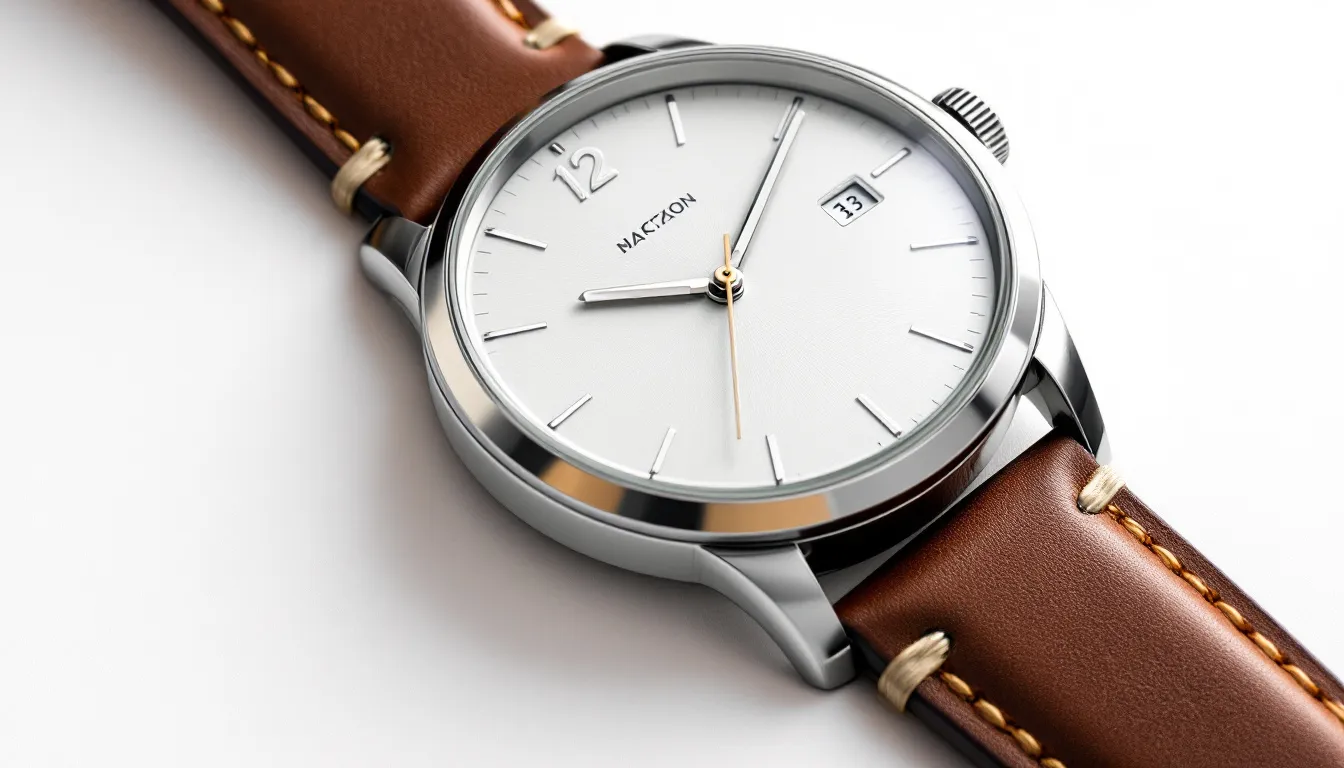
After installing the new replacement strap, make final adjustments and checks. Ensure the watch feels comfortable for everyday wear and is securely fastened to prevent it from slipping off.
Test the functionality of the watch to confirm everything is operating correctly. This final step ensures your watch is ready to accompany you on your daily adventures.
Common Issues and Troubleshooting
Here are some common issues that may arise during watch strap replacement and some troubleshooting tips:
-
Spring Bar Stuck in Lug Hole: If the spring bar is stuck, use a spring bar tool to gently push the spring bar end into the lug hole. This should release the bar without causing damage.
-
Watch Strap Too Loose or Too Tight: If the strap doesn’t fit correctly, adjust it by moving the spring bar end in or out of the lug hole. This allows you to achieve a snug and comfortable fit.
-
Damaged or Broken Watch Strap: If the strap is damaged or broken, it’s best to replace it with a new one. Ensure you choose the correct size and material for your watch to maintain its functionality and appearance.
By addressing these common issues with care and precision, you can troubleshoot effectively and ensure your watch strap replacement is successful.
Summary
In summary, replacing a watch strap is a straightforward process when you have the right tools and knowledge. From preparing your workspace to making the final adjustments, each step is crucial for ensuring a perfect fit and function.
Embrace the opportunity to refresh your watch’s look and feel. With the skills and tips provided in this guide, you’re now equipped to handle your watch strap replacements with confidence and ease.
Additional Resources
For more information on watch strap replacement, here are some additional resources:
-
Watch Strap Replacement Guides: Online tutorials and guides can provide step-by-step instructions for specific watch models and strap types. These resources are invaluable for visual learners.
-
Watch Strap Reviews: Reading reviews from other customers can help you find the best replacement watch straps for your needs. Reviews often highlight the pros and cons of different straps.
-
Watch Strap Retailers: Online retailers specializing in watch straps and bands, such as Wrist Envy, offer a wide selection of high-quality straps. These retailers often provide detailed product descriptions and customer reviews.
-
Watch Forums: Joining online forums and communities allows you to ask questions and get advice from other watch enthusiasts. These forums are great for sharing experiences and learning from others.
By exploring these additional resources, you can gain more knowledge and confidence in replacing your watch strap, ensuring your timepiece looks and functions perfectly.
Frequently Asked Questions
How do I measure lug width accurately?
To measure lug width accurately, use a digital caliper to measure the distance between the lugs in millimeters. This method ensures precise measurements for your needs.
What tools do I need for replacing a watch strap?
To replace a watch strap, you'll need a spring bar tool, a leather mat for protection, and a microfiber cloth to keep the watch clean. Having these tools on hand will make the process easier and more efficient.
Which strap material is best for an active lifestyle?
Rubber straps are the best choice for an active lifestyle because they offer both comfort and water resistance.
How do I remove a metal bracelet from my watch?
To safely remove a metal bracelet from your watch, employ specific techniques to detach the end links and handle the spring bars with care. This will ensure you avoid damaging the watch or bracelet.
What are quick-release straps?
Quick-release straps are designed for effortless attachment and removal using a small lever, eliminating the need for tools. They provide convenience and efficiency in securing items.
